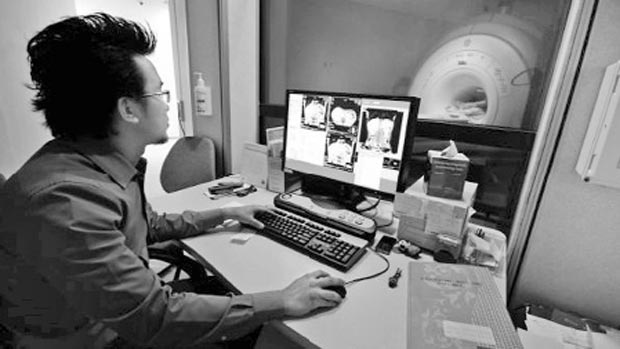13 Sep 2017 - {{hitsCtrl.values.hits}}

By Eduardo P. Banzon
More digital health interventions are needed to improve the quality of care in SMART facilities.
I grew up playing in a government health centre in my home city in the central Philippines. It was where I would usually go after school with my siblings to wait for my mother, who worked there as a nurse.
I recall the centre as newly built, freshly painted and welcoming to patients and myself, a very active grade school kid. The patients were satisfied with the quality of care provided in this well-built piece of local health infrastructure.
The years went by and my home city became bigger, richer and more crowded, while its infrastructure got older. It is sad to realize that my playground health centre now looks its age, like many other 40-year-old clinics spread across the country and in Asia and the Pacific. Moreover, new health infrastructure is being built with the same specifications as my city’s old facility.
Many new government-run hospitals and health centres are being built for acute care, which responds to the past primary disease burden of communicable diseases. These facilities lack web connectivity, are not prepared for climate change, are not capable of or designed to deal with chronic care for the elderly and their management systems have not been upgraded to address new health issues and concerns.
Among the new health concerns are the changing patterns in disease burden brought about by aging and increasing incidence and prevalence of non-communicable diseases and the urgency of mitigating the health impacts of climate change.
Other pending issues are the availability of electronic information and analytics to inform coordinated care and better payment methods to ensure everyone can get the healthcare they need when they become sick – or to prevent illnesses.
Five ways to make health infrastructure SMART
For developing Asia to achieve universal health coverage (UHC), we need better health infrastructure that Supports UHC efforts, helps mitigate the effects of climate change, addresses aging populations, is resilient to disasters and embraces technology. These are the five pillars of my vision for SMART health infrastructure in the region.
First, health facilities should no longer be conceived as stand-alone units catering to fragmented market and population segments. Instead, they should provide health services in a coordinated and integrated manner so everyone can access them.
Rather than individual facilities, hospitals should be hubs and primary care centres should act as spokes, designed and constructed to be managed as a single entity working together.
Second, health infrastructure investments must be ‘green’ to help mitigate the effects of climate change. Hospitals are quite energy-intensive and thus an important source of carbon dioxide emissions. Future, climate-smart health facilities should be designed for resilience and built in more protected locations, with the services needed to provide more efficient water and
energy usage.
Third, with people aged 60 and over projected to comprise a fifth of the world’s population in 2050, it’s time to transform and reconfigure current hospitals and build new ones that respond better to the conditions and health-seeking behaviour of old people. Elderly-friendly facilities should be designed and tasked to help the elderly take care of themselves and simulate the environment of home care.
Fourth, health services and facilities typically suffer great damage from natural disasters, but it’s crucial that they continue functioning in the aftermath of such calamities. We can achieve this with back-up generators and fresh water dispensers (ideally powered by renewable energy sources); physical protection against flooding, strong winds and earthquakes; and with preventive measures like placing diagnostic imaging equipment at higher floors instead of the basement.
Hospitals, let’s not forget, not only provide lifesaving services but are also an essential sense of security for disaster victims when they are most vulnerable.
Finally, web access should no longer just be an option but a must. The digital health interventions we need to improve the quality of healthcare services from telemedicine to electronic medical records, all need Internet connectivity.
The evidence consistently shows that quality of care, efficiency and patient safety are improving and increasing with the use of digital health tools. It is therefore imperative that Internet connectivity becomes as basic a need as the supply of medicines and water.
If we want to ever achieve UHC in developing Asia and the Pacific, our future health infrastructure must be built SMART. Otherwise all the hospitals we are building today will in a few decades look as dilapidated as my old health centre.
(Eduardo P. Banzon is the Principal Health Specialist, Sustainable Development and Climate Change Department at Asian Development Bank)
25 Nov 2024 6 minute ago
25 Nov 2024 24 minute ago
25 Nov 2024 49 minute ago
25 Nov 2024 1 hours ago
25 Nov 2024 1 hours ago